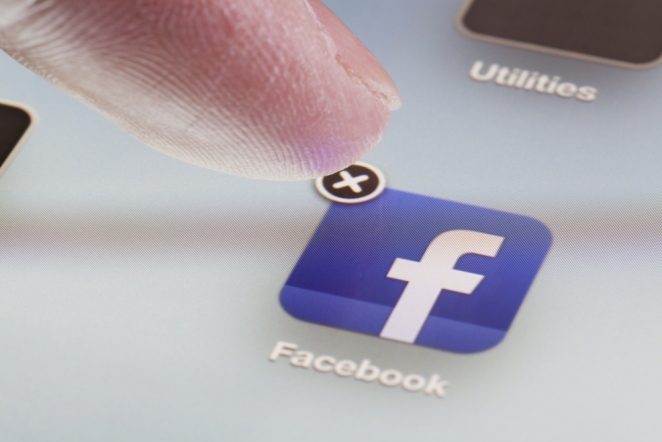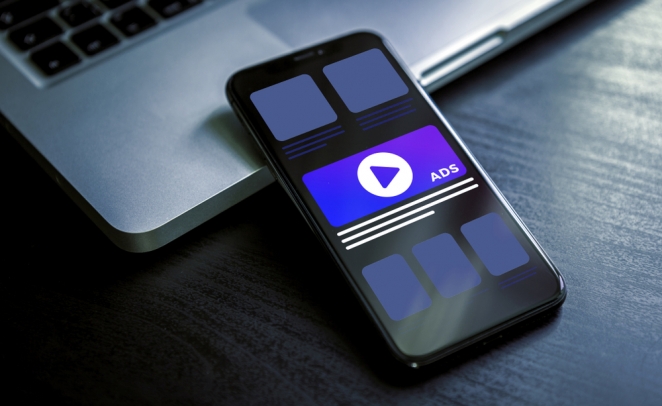Marketing is crucial for start-ups looking to scale their business. Without a marketing strategy, they face an uphill battle to grow brand awareness and drive sales and engagement. But often in the early phases of building a business, funds are tight. Finding the budget for marketing is one thing but Ayal Steiner, VP of Advertising at Outbrain, wants us to realise how to use it as effectively as possible. Which is another challenge entirely
Vaulting the walled garden

With increasing competition squeezing the affordability of ad space in walled garden channels such as Facebook and Google, entrepreneurs and SME decision makers will rightfully be questioning whether their budget should be directed elsewhere. This question was further scrutinised after Facebook recently suffered an outage, impacting advertisers on its platforms who lost crucial brand exposure for over six hours.
As a consequence, traditional marquee publishers in every market globally saw a large traffic increase - some up 70% in site visits. The incident demonstrated how fluid online attention is and why establishing direct relationships with users remains the most valuable currency.
The pandemic-induced rise in e-commerce has further exacerbated efficiency on these channels, pricing smaller businesses even further out of the market. A recent Business Insider article revealed that cost-per-thousand impressions (CPMs) associated with Google’s programmatic inventory shot up by 198% year-on-year in July 2021, while CPCs for its shopping ads during the second quarter increased 40% year-on-year. Meanwhile, YouTube’s CPMs soared by 108% year-on-year in July and Facebook saw a similar 89% increase in its CPMs over the course of the same period.
The solution for small businesses is to diversify their marketing portfolio. This provides businesses with an opportunity to reach new audiences and balance costs based on cost and performance. One of these alternative channels is native advertising – contextual paid placements on the open web designed to match the look, feel and function of the media format in which they appear.
Why choose native advertising on the open web for scaling businesses?

Standing out in a competitive market during early-stage development is tough, but it’s also key to a growing business’s success. For start-ups and scale-ups, time is short, capacity is stretched and budgets are tight. In this context, native advertising offers businesses a cost and time-efficient marketing solution which delivers predetermined outcomes at scale.
There are plenty of reasons why developing businesses should choose native advertising:
Ease of use: Native advertising is a single, simple platform that can seed multiple adverts simultaneously. It takes the hassle out of content creation processes by automatically adapting creative to the advertising environment it’s hosted on, easing time pressures for busy scale-ups.
Flexibility: It supports a range of different formats – from native in-article placements to long-form video content – and serves a variety of marketing objectives including awareness, engagement and lead generation campaigns.
Wide reach: It’s capable of reaching large audiences across a global network of high-quality media environments covering a spectrum of interests. To put it into context, native advertising offers superior reach numbers and reach capability, with Outbrain alone reaching 90% of the US population compared to Facebook’s 72%.
Targeted: If your business lacks an established reputation and your goal is to raise awareness, native advertising excels - in particular when compared with search-based marketing channels such as pay-per-click (PPC). If your businesses have little to no online footprint, appearing on search terms with low traffic or which are highly competitive will be ineffective and costly. Instead, native advertising can provide online brand placements embedded within content which the user has actively searched for. This ensures marketers are able to reach an audience, which is highly engaged, placing them further down the purchasing funnel. Native advertising is therefore considerably less speculative than advertising channels such as Out-of-Home, which offers considerable reach without a targeted approach.
Brand security: Unlike Facebook, YouTube and Twitter, where adverts can appear alongside sensitive, contentious or negative user-generated content, native advertising gives brands greater control over their placements. Crucially for brands which are growing their reputation from scratch, this lowers the risk and protects their credibility.
User-friendly: Native ads don’t look like ‘traditional’ adverts as such. Instead, they are integrated seamlessly into the website they’re hosted on, exposing the reader to the content of an advert without disrupting the user experience or interrupting the editorial flow of a page. This is crucial to maintaining positive brand sentiment and generating authentic click through rates. In a recent Outbrain study of 1,000 UK consumers, we found that 95% of consumers felt negatively towards a brand that disrupts them online and 66% ignore an ad when it interrupts their online experience.
Accountability: And last but not least, native advertising is an accountable media. Its CPC basis is outcome-based and drives people to websites, appealing to their mode of discovery in the correct environment.
Ogee, a luxury skincare line, is a practical example of a Direct-to-Consumer challenger brand success story which scaled up its business using native advertising. Historically, Ogee had allocated a significant portion of its ad spend to Facebook placements. When performance began declining earlier this year, Ogee sought a new partner to help drive online sales while maintaining a strong return-on-ad-spend (ROAS) and low cost-per-action (CPA).
Using short-form video assets to showcase their products and drive online sales through call-to-actions (CTAs), Ogee’s native advertising drove a CPC 76% lower than Facebook’s beauty vertical benchmark and delivered 14,000 conversions in four months.
Native advertising strategies for scaling businesses

Ogee is an example of how a brand can benefit from diversifying its channels. The results demonstrate the value of native advertising for disruptor brands to grow awareness and drive sales without the need for bricks and mortar stores.
It’s also an example of how native advertising can work from start-up, through to medium and then large sized business, because of its versatility. Native advertising serves diverse business types with a universal application. But exactly how do businesses implement native advertising as they grow?
Native advertising is particularly potent at supporting campaigns aimed at growing an engaged consumer base - be it subscribers, downloads, players, or users – and campaigns that prioritise lead generation - a great way to appease investors. It does this by using customisable call-to-action (CTA) buttons which direct users to a specific landing page with more information on a business’s products or services. The landing page can be used to educate and inform consumers - with more in-depth content than social platforms such as Twitter can afford - before leading to a conversion.
Start-ups will therefore find native advertising is useful when they start their initial scale-up and reach a point when they need to implement digital marketing to attract new business and grow. Due to its wide reach and targeting capabilities, native advertising excels in delivering wider audiences and more engagement online.
For start-ups, you can also use native advertising to promote earned media, a unique angle not available on Google search. You can make sure links to this earned media occur within specific contexts or link directly to ‘go fund me’ pages - perfect for new businesses.
Once a large and loyal following is established, and a medium-large sized business has been developed, native advertising budgets can be increased to experiment more with the channel. As is universal with advertising, native advertising will deliver diminishing returns the longer and more successful a campaign has been.
This is because interested demographics are finite. However, businesses can maintain high ROAS by exploring new audiences and targeting existing ones with different creatives. This approach creates opportunities to optimise using an A/B testing approach to identify the best performing ads, audiences, outlets and campaign types before carefully allocating budgets accordingly. Native advertising allows marketers to do this at unrivalled scale – ideal if the business is expanding globally. It’s an ‘untapped blue ocean’ with little competition and accessible costs and implementations.
Larger businesses can also integrate native advertising into wider marketing campaigns for best results. This is because of its innate ability to ‘join the dots’ between impression, engagement, and conversion. Although native advertising is particularly well-suited to mid-funnel engagement, it can also support high funnel awareness with impressions. By tracking these impressions and then targeting users with further content which sparks an activation, native advertising is also adept at supporting low funnel activity.
The future of native advertising for business growth

Although native advertising may still be a relatively new concept to some businesses, and many may resort to established social media channels by default, its growth trajectory demonstrates why it needs to be appearing on the marketing strategies of all organisations. This trend will accelerate in the lead up to 2022 when cookies will cease to exist on Google Chrome, ultimately impacting the effectiveness of channels that rely on third-party data.
Instead, channels such as native advertising - which use first-party click based data - will rise to prominence in their place. Companies using native advertising after 2022 will still be able to access the same metrics and objectives they did with traditional web advertising. However, as a channel which has existed historically without using cookies, native advertising will be better equipped to perform.
With brands increasingly exploring first-party data channels ahead of the 2022 deadline for cookies, Q4 of 2021 represents a vital last opportunity for brands to test and learn with native advertising.
As native advertising on the open web continues to grow, scaling businesses can grow in tandem. Capitalising on the potential of native advertising now can unlock the potential of start-ups tomorrow.






